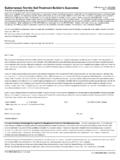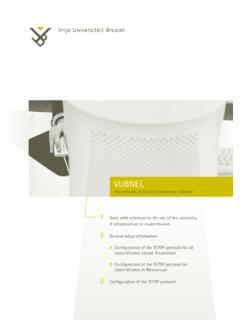Transcription of The Price of Poverty in Big Time College Sport
1 "The Price of Poverty in Big time College Sport ". Table of Contents ([HFXWLYH 6 XPPDU\ ..3. ,QWURGXFWLRQ %DFNJURXQG . 7KH 6 SLQ 0 RYH 7KH 6 WXGHQW-$WKOHWH DQG $PDWHXULVP ..6. 7KH 6 WXGHQW-$WKOHWH ..7. $PDWHXULVP .. 10. 3 XUSRVH RI WKH 6 WXG\ 14. 0 HWKRG .. 14. $QDO\VLV .15. )LQGLQJV .16. 'LVFXVVLRQ 18. 3 ULFHOHVV 3 RYHUW\ ..18. 7KH 1&$$ V %ODFN 0 DUNHW . 7KH 1 HHG IRU )HGHUDO ,QWHUYHQWLRQ . 5 HFRPPHQGDWLRQV . 5 HIHUHQFHV 28. 2. Executive Summary Since the mid- V WKH 1&$$ KDV SURPRWHG D P\WKRORJ\ WKDW FROOHJH DWKOHWHV RQ IXOO VFKRODUVKLS . UHFHLYH D IUHH ULGH LQ WHUPV RI WKeir College educations. As has repeatedly come to light, athletes in the revenue-SURGXFLQJ VSRUWV RI IRRWEDOO DQG PHQ V FROOHJH EDVNHWEDOO DUH OHVV OLNHO\ WR UHFHLYH WKHLU GLSORPDV . than any other group of athletes while also bearing the burden of financing a College Sport enterprise that has resulted in highly lucrative compensation packages for high profile coaches, athletics administrators, conference commissioners, and football bowl executives.]
2 During the summer of 2011, there has been lively debate and discussion regarding the question of whether College athletes should be paid or compensated more fairly for the work they do resulting in the generation of billions of dollars in revenue for stakeholders in the College Sport corporate complex. For anyone following the economics and business practices of the industry during the past six decades, this moment has been coming for a long time . The suppression of wages of an unnamed labor force artfully UHIHUUHG WR DV VWXGHQW-DWKOHWHV D WHUP WKH 1&$$ DGPL ttedly created to deflect attention away from the fact that awarding a scholarship for athletic prowess constituted a pay for play system, has been in operation since the adoption of the four year athletic scholarship award in the 1950s (Byers, 1997;. McCormick & McCormick, 2006; Sack & Staurowsky,1998; Staurowsky & Sack, 2005). This report is particularly timely because of the string of recent controversies that have raised serious questions about the moral underpinnings of the College Sport enterprise and its practices (Farrey & Gubar, 2011.)
3 Robinson, 2011). In an attempt to explore the implications of this mythology and provide perspective about the impact this has on the lives of big-WLPH FROOHJH IRRWEDOO DQG PHQ V EDVNHWEDOO SOD\HUV WKLV VWXG\ GRFXPHnts the VKRUWIDOO WKDW H[LVWV EHWZHHQ ZKDW D IXOO VFKRODUVKLS FRYHUV DQG ZKDW WKH IXOO FRVW RI DWWHQGLQJ FROOHJH LV . compared to the federal Poverty guideline, an estimation RI SOD\HUV IDLU PDUNHW YDOXH DQG RIIHUV . perspective on the disproportional levels of compensation to which College Sport officials have access compared to the limits imposed on revenue-generating athletes who serve as the talent and inspire the financial investment in the product of College Sport . This study, a collaborative effort between the National College Players Association and Drexel University Sport Management Program, reveals that National Collegiate Athletic Association (NCAA) rules force players to pay for thousands in educational-related expenses while working in a culture that underestimates their contributions to a multi-billion dollar industry.]
4 The range of out-of-pocket expenses for a "full" scholarship student-athlete in the Football Bowl Subdivision (FBS) is $952/year to $6,127/year depending on the College . Further, the study estimates the fair market value of big time football and PHQ V basketball players to be in the hundreds of thousands of dollars annually while the NCAA restricts the value of the full scholarship to a level of compensation that is at or below the Poverty OHYHO IRU WKH YDVW PDMRULW\ RI DWKOHWHV 7 KLV UHSRUW RIIHUV DQ H[DPLQDWLRQ RI WKH SDUDGR[ RI DPDWHXU . revenue-producing College athletes who are paid to play, the power of propaganda associated with the 1&$$ V VHOI-serving concept of amateurism, the predicament of athletic scholarships being viewed as ample compensation, the scandals related to the big earnings for athletics officials and Poverty wages for revenue-SURGXFLQJ DWKOHWHV FROOHJH SUHVLGHQWV LQDELOLW\ WR LQLWLDWH UHIRUP DQG Whe call for federal intervention. 3. M ajor Findings &ROOHJH DWKOHWHV RQ IXOO VFKRODUVKLS GR QRW UHFHLYH D IUHH ULGH )RU WKH -2010 academic year, the average annual scholarship shortfall (out of pocket expenses) for Football Bowl Series (FBS) "full".]]
5 Scholarship athletes was $3,222. 7KH FRPSHQVDWLRQ )%6 DWKOHWHV ZKR DUH RQ IXOO VFKRODUVKLS UHFHLYH IRU OLYLQJ H[SHQVHV URRP DQG . board, other expenses) situates the vast majority at or below the Poverty level. 3. The percentage of FBS schools whose "full" athletic scholarships leave their players in Poverty is 85% for those athletes who live on campus; 86% for athletes who live off campus. 3. The average FBS "full" scholarship athlete earns less than the federal Poverty line by $1874 on campus and $1794 off campus. 4. If allowed access to the fair market like the pros, the average FBS football and basketball player would be worth approximately $121,048 and $265,027 respectively (not counting individual commercial endorsement deals). 5. Football players with the top 10 highest estimated fair market values are worth between $345k-$514k in 2009-10. The top spot was held by University of Texas football players. While 100% of these players received scholarships that left them living below the federal Poverty line and with an average scholarship shortfall of $2841 in 2010-11, their coaches were paid an average of over $ million each in 2010.]
6 Excluding bonuses. (See Table 1.). 6. Basketball players with the top 10 highest estimated fair market values are worth between $620k-$1. million in 2009-10. The top spot was held by Duke basketball players. While 80% of these players received scholarships that left them living below the federal Poverty and with an average scholarship shortfall of $3098 in 2010-11, their coaches were paid an average of over $ million in 2010 excluding bonuses. (See Table 2.). 7. The poorest football and basketball players (generated combined FB and BB revenues of $30 million or more in 2009-10, yet live in the poorest bottom 1/3 of all of the players in the study live between $3,000-$5,000 below the Poverty line (see Table 3) in the report for further details. 8. Despite record revenues, salaries, and capital expenditures and prohibitions on countless sources of income for athletes, the NCAA explicitly allows tax payers to fund food stamps and welfare benefits for College athletes.)
7 9. FBS schools could provide more equitable financial terms for their revenue-producing athletes without eliminating any non-revenue generating sports or reducing scholarships from athletes from non-revenue generating sports . The second attachment (2 tables with data) points to lavish spending in by FBS. schools in non-revenue sports . We've compared non-revenue sports expenditures between FBS schools and Football Championship Subdivision (FCS) schools because all of their non-revenue sports compete against each other in Division I. We focused on this to find out what it costs to run a competitive Division I non-revenue generating team which is demonstrated by the FCS numbers. The FBS non-revenue team expenses show that these schools spend far more than what's necessary to field these teams. BCS schools spend an average of about $350,000 more on each non-revenue team when compared to FCS schools. FBS schools average 18 non-revenue generating teams per campus, which means they spend an average of about $ million/year more than FCS schools on non-revenue generating sports .
8 4. Recommendations Congress should act immediately to deregulate the NCAA with the provisions detailed below: #1. 6 XSSRUW OHJLVODWLRQ WKDW ZLOO DOORZ XQLYHUVLWLHV WR IXOO\ IXQG WKHLU DWKOHWHV HGXFDWLRQDO RSSRUWXQLWLHV . with scholarships that fully cover the full cost of attendance. The average $3222 increase per player would be enough to free many from Poverty and reduce their vulnerability to breaking NCAA rules to make ends meet. This can be funded with the new TV revenue streams that are surging throughout NCAA. sports . A $3222 scholarship increase would cost approximately $ million for 85 scholarship players from each of the 120 FBS football teams, and $ million to do the same for 13 scholarship players on each of the 338 Division I basketball teams that offer scholarships. The total would be about $47 million annually. Should Title IX compliance require that provisions be made for female athletes to receive a similar benefit, that amount can be doubled for a total of $94 million annually.
9 To put this in perspective relative to the new revenues that are available throughout NCAA sports , the new Pac-12 TV contract alone will bring in $150 million in new revenues each year. The year-old NCAA. TV contract with CBS will average about $270 million in new revenues above and beyond its previous TV deal with CBS. These new revenues could fund coverage of the scholarship shortfall gap. /LIW UHVWULFWLRQV RQ DOO FROOHJH DWKOHWHV FRPP ercial opportunities by adopting the Olympic amateur PRGHO 7KH 2O\PSLFV LQWHUQDWLRQDO GHILQLWLRQ RI DPDWHXULVP SHUPLWV DPDWHXU DWKOHWH DFFHss to the commercial free market. They are free to secure endorsement deals, get paid for signing autographs, etc. 7KH 1&$$ V YHUVLRQ RI DPDWHXULVP LV LPSUDFWLFDO DQG LV DQ XQMXVW ILQDQFLDO DUUDQJHPHQW LPSRVHG XSRQ . FROOHJH DWKOHWHV 7KH 1&$$ V DWWHPSW WR eliminate the commercial free market creates a black market in which universities, coaches, agents, financial advisors, runners, and players will continuously violate the rules.
10 Alternatively, if the Olympics model were allowed, virtually all of the high profile violations over the last year would not have been deemed violations. Selling a championship ring and even accepting a IUHH WHOHYLVLRQ ZRXOG QRW KDYH EHHQ VFDQGDORXV PXFK OHVV DQ 1&$$ YLRODWLRQ . #3. Promote the adoption of legislation that will allow revenue-producing athletes to receive a portion of new revenues that can be placed in an educational lockbox, a trust fund to be accessed to assist in or upon the completion of their College degree. Many athletes in these sports need educational assistance beyond the duration of their eligibility in order to make up for the significant time demands associated with their Sport . About 45% and 52% of football and basketball players DO NOT graduate, while their athletic programs receive 100% of reveQXHV SURGXFHG E\ WKHVH DWKOHWHV UHJDUGOHVV RI WKHLU SURJUDPV JUDGXDWLRQ . rates. #4. Colleges should be free to provide multiple year scholarships in all sports if they so choose.








